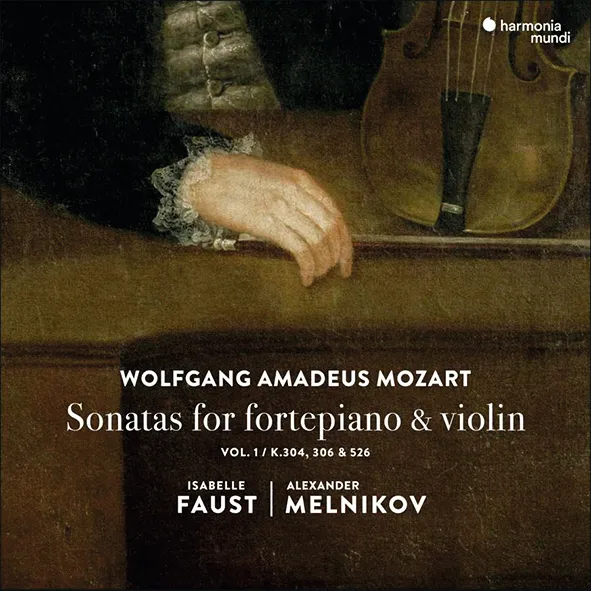
Mozart Violin Sonatas: No. 21 in E minor, K304; No. 23 in D, K306; No. 35 in A, K526 Isabelle Faust (violin), Alexander Melnikov (fortepiano) Harmonia Mundi HMM 902360 65:50 mins
Three remarkably different works make up the first volume in this survey of Mozart’s Sonatas for fortepiano and violin. The D major K306 could be described as a kind of hybrid Sonata Concerto with many virtuosic flourishes in the opening movement, an operatically conceived slow movement, and an Allegretto finale which features a dazzling extended cadenza for both instruments. In sharp contrast, the two movements of the E minor Sonata, K304, are introverted and tinged with melancholy. After this comes the A major K526, Mozart’s final work in this genre, composed the same year as Don Giovanni and infused with passages of intricate contrapuntal argument that reflect the composer’s growing fascination for the music of Bach and Handel.
Both players on this warmly recorded release respond to the distinctive soundworlds of these three works with performances of great subtlety and flexibility. As in her recordings of the Mozart Violin Concertos, Isabelle Faust uses vibrato extremely sparingly, but still manages to create an astonishing variety of timbres. Whereas many violinists opt for a warmer sound in the E minor Sonata, Faust follows Mozart’s marking of sotto voce to the letter in the quieter passages, thereby making the unexpected forte eruptions in the first movement sound all the more powerful. Alexander Melnikov, performing on a modern reproduction of an Anton Walter fortepiano, also maximises the textural variety in Mozart’s writing, sometimes opting for brilliance in articulation in virtuoso passages and in the slow movements projecting a wonderfully sustained cantabile tone. Almost all repeats are observed enabling both performers to ornament their melodic lines in a creative and spontaneous manner.
Erik Levi